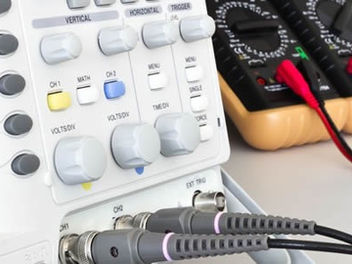What to Expect During an Electrical Safety Inspection
- Guy hudson
- Jun 4
- 7 min read
An electrical safety inspection is a comprehensive evaluation of your property's electrical systems, ensuring they meet current safety standards and function efficiently. These inspections are crucial for both residential and commercial properties, often prompted by property sales, renovations, insurance requirements, or as part of routine maintenance. Beyond safety, these assessments can also contribute to improved energy efficiency, potentially leading to better energy performance and favourable EPC ratings.
The primary goal of an electrical safety inspection is to assess the condition and safety of your electrical installations. A qualified electrician will examine various components to ensure compliance with local codes and standards. This process helps identify potential hazards, such as outdated wiring or overloaded circuits, that could compromise safety and energy performance.
Key Components Evaluated
During the inspection, several critical elements are assessed:
Wiring and Outlets: Checking for signs of wear, damage, or outdated materials that could pose fire risks.
Circuit Breakers and Electrical Panels: Ensuring breakers function correctly and panels are free from corrosion or overheating signs.
Grounding and Bonding Systems: Verifying that the system is properly grounded to prevent electrical shocks.
Safety Devices (GFCIs and AFCIs): Testing Ground Fault Circuit Interrupters (GFCIs) and Arc Fault Circuit Interrupters (AFCIs) to ensure they operate correctly, providing protection against shocks and electrical fires.
Frequency of Inspections
Regular inspections are vital for maintaining electrical safety and efficiency:
Residential Properties: Every 10 years for owner-occupied homes.
Rental Properties: Every 5 years or at the start of a new tenancy.
After Major Renovations or Additions: To ensure new installations comply with safety standards.
When Purchasing or Selling a Home: To identify any existing electrical issues.
Adhering to these intervals not only ensures safety but can also positively impact your property's energy performance certificate (EPC) rating.
Take a proactive step towards a safer, more efficient property. Contact us today to schedule your electrical safety inspection.
What Happens During an Electrical Safety Inspection
Initial Assessment
The inspection begins with a comprehensive visual inspection of your property's electrical system. A qualified electrician will examine electrical panels, outlets, switches, and visible wiring for signs of wear, overheating, or outdated materials. This step helps identify any immediate hazards that could pose safety risks.
Testing Procedures
To uncover issues not visible to the naked eye, electricians employ specialised tools:
Voltage Testers and Thermal Cameras: These devices detect irregularities in electrical flow and hotspots that may indicate potential problems.
GFCI and AFCI Testing: Ground Fault Circuit Interrupters (GFCIs) and Arc Fault Circuit Interrupters (AFCIs) are tested to ensure they function correctly, providing protection against electrical shocks and fires.
Code Compliance Check
Ensuring that your electrical system adheres to current codes and standards is vital. The electrician will verify that all installations meet the requirements set out in the 18th edition of the Wiring Regulations (BS 7671). Any deviations from the code that may pose safety risks are identified for corrective action.
Importance of Rental Properties
For landlords, regular electrical safety inspections are not just best practice—they're a legal requirement. The Electrical Safety Standards in the Private Rented Sector (England) Regulations 2020 mandate that electrical installations in rental properties be inspected and tested at least every five years by a qualified person. Failure to comply can result in significant penalties and jeopardise tenant safety.
Energy Performance Considerations
While electrical safety inspections focus on the safe operation of your electrical system, they also intersect with energy efficiency considerations. Properties are required to meet certain EPC requirements, ensuring a minimum energy performance standard. Upgrading to energy-efficient lighting or incorporating renewable energy sources can improve your property's EPC rating, aligning with EPC regulations and contributing to environmental sustainability.
Common Issues Identified During Inspections: What You Need to Know
Electrical inspections are essential for ensuring that your home or commercial property is both safe and energy efficient. They help uncover hidden problems that could pose serious risks or result in costly repairs. More importantly, they support your efforts to meet current regulations and energy efficiency standards—key factors when aiming for a higher EPC. In this post, we’ll explore the most common issues identified during inspections and why addressing them early can save you time, money, and potential hazards down the line.
Wiring and Outlet Problems
Frayed or Exposed Wires
One of the most frequently found issues during inspections is frayed or exposed wiring. These can occur over time due to wear and tear, rodent damage, or poor installation. Exposed wires are dangerous as they increase the risk of electrical shocks and fire. A timely inspection allows electricians to replace or secure the wiring, ensuring the safety of your property.
Overloaded Circuits
Plugging too many appliances into one circuit can cause overheating and increase the chance of electrical fires. During an energy assessment, inspectors often discover circuits that are burdened beyond their safe capacity. Correcting these issues by redistributing loads or adding new circuits improves overall safety and contributes to better energy management.
Improperly Grounded Outlets
Grounding is essential to prevent electrical shocks and ensure system stability. Improperly grounded outlets are a common problem that may not be visible to the untrained eye. An inspection can reveal these shortcomings, helping ensure your property’s EPC rating benefits from modern, safe installations.
Panel and Breaker Concerns
Overcrowded or Outdated Panels
Older properties often have outdated panels that were not designed for modern energy demands. Overcrowded panels can make it difficult to add new circuits and may pose a fire risk. Updating the panel not only improves safety but also supports a property’s ability to meet the minimum energy efficiency required by law.
Tripped or Malfunctioning Breakers
Frequent tripping or breakers that fail to function properly are clear signs of deeper electrical issues. These problems can interrupt your energy usage and even lead to system failure. Inspections help pinpoint faulty breakers so they can be replaced before more serious damage occurs.
Grounding and Bonding Issues
Inadequate Grounding Systems
Improper grounding is a safety risk and can prevent your system from operating efficiently. Inspectors check whether your grounding system is up to the current efficiency standard. If not, improvements will help bring your electrical system up to the latest energy efficiency standard.
Corroded or Loose Connections
Over time, moisture and wear can cause connections to corrode or loosen. This can result in voltage drops or intermittent power issues. An inspection identifies these faults, ensuring your electrical system runs safely and efficiently.
Safety Device Failures
Non-functional GFCIs or AFCIs
Ground Fault Circuit Interrupters (GFCIs) and Arc Fault Circuit Interrupters (AFCIs) are critical for preventing shocks and fires. Faulty or missing units are a major red flag during inspections. Replacing them can drastically improve your safety measures and contribute to a valid EPC.
Missing or Expired Smoke Detectors
Smoke detectors save lives—but only when they’re functional. Inspections frequently uncover missing or outdated units. Keeping them updated not only meets safety standards but also helps your property achieve a higher EPC, boosting its overall value and compliance rating.
Preparing for an electrical safety inspection is a proactive step toward ensuring the safety, efficiency, and compliance of your property. Whether you're a homeowner, landlord, or property manager, understanding how to get ready for such an inspection can help you avoid potential issues and ensure that your electrical systems meet the necessary standards.
Preparing for an Electrical Safety Inspection
Organise and Clear the Inspection Area
Before the inspection, ensure that all electrical panels, outlets, and switches are easily accessible. Remove any obstructions such as furniture, storage boxes, or decorations that might hinder the inspector's access. A clear workspace not only facilitates a thorough examination but also demonstrates your commitment to maintaining a safe environment.
Address Visible Issues
Inspect your property for any visible electrical problems. Replace or repair damaged outlets, switches, or exposed wiring. Ensure that all circuit breakers are clearly labelled, making it easier for the inspector to identify and assess each circuit. Addressing these issues beforehand can prevent potential violations and the need for re-inspection.
Review and Update Documentation
Gather all relevant documentation related to your property's electrical system. This includes previous inspection reports, electrical schematics, and records of any recent upgrades or repairs. Having up-to-date documentation readily available can expedite the inspection process and provide the inspector with a comprehensive understanding of your electrical system's history.
Test Safety Devices
Ensure that all safety devices are functioning correctly. Test smoke detectors and carbon monoxide alarms to confirm they are operational and have fresh batteries. Additionally, check Ground Fault Circuit Interrupters (GFCIs) and Arc Fault Circuit Interrupters (AFCIs) to ensure they trip and reset properly. These devices are crucial for preventing electrical hazards and are often a focal point during inspections.
Consider Energy Efficiency Improvements
An electrical safety inspection is also an opportunity to assess your property's energy efficiency. Evaluate your current systems and identify areas where you can improve energy usage. Upgrading to energy-efficient appliances, installing LED lighting, or enhancing wall insulation can contribute to better energy efficiency standards. Such improvements not only reduce energy consumption but also align with current energy efficiency standards, potentially leading to cost savings and environmental benefits.
Understand the Exemptions Register
If your property is listed on the exemptions register, it's essential to understand what this entails. Certain properties, such as historical buildings or specific rented properties, may have different requirements or exemptions concerning electrical inspections. Familiarise yourself with these exemptions to ensure compliance and avoid unnecessary modifications.
Conclusion
Ensuring your property’s electrical safety is not just a requirement—it’s peace of mind for you and everyone who uses the space. That’s where Global Compliance UK comes in. As a trusted partner nationwide, we deliver comprehensive electrical safety services that meet the highest efficiency standards. Our expert team, trusted by leading schools, businesses, and property agents, provides tailored support for all types of properties, including rented properties.
From checking wall insulation to recommending energy efficiency improvements, we help you stay compliant without compromising on quality—all at competitive prices. Ready to take the stress out of your next inspection? Contact us today at info@global-compliance.co.uk or call 0330 100 5341. With Global Compliance UK, you’re choosing safety, reliability, and a future-proof electrical system.



























Comments